08 Oct CS LIM: el maestro de los paisajes cuánticos
Chao-Sek Lim, conocido como CSLIM en el universo NFT, es un joven artista coreano que usa el arte digital transformando obras clásicas, mediante código e inteligencia artificial, en espectaculares paisajes. Os invitamos a conocer su vida y su obra
Puede parecer difícil y contrario al sentido común, pero todo lo que existe en este mundo puede existir como un árbol, como una piedra o como una partícula de vapor de agua en una nube en cualquier momento. al mismo tiempo. CS LIM
Chae-Seok Lim aka CSLIM: entrevista
Tabla de contenidos
¿Quién es CS LIM?
Soy Chae-Seok Lim, un artista digital que usa IA, que trabaja bajo el nombre de CSLIM. Era ingeniero en el campo de la conducción autónoma basada en la IA, así como desarrollador Dapp de blockchain. Tenía un gran deseo de crear, pero no se me daba bien dibujar, así que me interesaba mucho el arte generativo mediante código. Creo que la tecnología de IA será una herramienta que tendrá un gran impacto en la industria del arte y las tendencias, como lo hicieron los ordenadores y las cámaras. La tecnología actual de IA es todavía difícil de entender y tiene muchas áreas que perfeccionar, también se considera una tecnología inmadura, creo. Pero, en otras palabras, esto también significa que la IA tiene mucho potencial.
Estoy produciendo obras de diversos temas utilizando la tecnología de la inteligencia artificial, y pienso probar continuamente obras experimentales para encontrar el ámbito de aplicación de esta tecnología.
🍁 AI 4 SEASONS 🍁
✨ 88 unique oriental landscapes by AI
✨ AI fusion of oriental ink painting & impressionism* AUTUMN (88) on @opensea 🍂https://t.co/t4rd6jskFP
* SUMMER (88) on @withFND 🏖️https://t.co/GUTvihchE2#generativeart #ai #raredigitalart #digitalart #asianart pic.twitter.com/I2DGdKFv5H
— CS LIM (@cslim_aiart) September 28, 2021
¿Qué mensaje o intención quieres expresar con tu l obra?
Al principio de mis actividades creativas con IA, la parte que intenté conseguir fue crear una obra de pintura digital que pareciera hecha por un humano, es decir, una obra de una calidad que no se distinguiera de una obra creada por un humano mediante IA. Creo que ese hito se ha conseguido hasta cierto punto, pero a medida que pasaba el tiempo, tenía la sensación de que faltaba algo importante en la obra.
Creo que en aquella época era más un ingeniero con conocimientos avanzados de IA que un artista. Al sentirme ansioso por mis resultados, empecé a probar varias cosas, y finalmente empecé a encontrar algo que sólo la IA podía crear. Creo que fue posible porque hubo una transición de mentalidad de un ingeniero a un artista. A partir de ahí, empecé a buscar elementos que pudieran marcar la diferencia al crear mediante IA, y el punto de partida fue combinar los estilos oriental y occidental. El intento de combinar el arte oriental, representado por la pintura en tinta, y el impresionismo, un estilo típico de Occidente, me dio la oportunidad de reconocer el nuevo potencial de la IA. En estos intentos experimentales, desarrollé una serie de nuevos estilos de pintura, y después de realizar pruebas adicionales en cada estilo, comencé a crear una obra para cada estilo.
Lo que quería destacar con mi serie de pinturas de paisajes de IA es la interpretación visual de la teoría física llamada mecánica cuántica. Parece una palabra bastante extraña e inapropiada para un tema artístico, pero este tema es un campo que actualmente me interesa y estudio, y cuanto más lo conozco, más misterioso e interesante resulta. Entre los contenidos de la mecánica cuántica, el contenido en el que me he centrado es que “toda la materia que existe en este mundo existe de forma probabilística”.
Puede parecer difícil y contrario al sentido común, pero todo lo que existe en este mundo puede existir como un árbol, como una piedra o como una partícula de vapor de agua en una nube en cualquier momento. al mismo tiempo. Puede que no lo creas, pero esta absurda historia que parece adoptada de las escrituras budistas va más allá de las hipótesis y ya se reconoce como una de las principales teorías de la física moderna. Depende de cada uno decidir cómo aceptar e interpretar esta difícil historia, pero yo he estado haciendo mi propia interpretación visual, y en el proceso de explorar el espacio interior del modelo de la IA, he encontrado la forma más apropiada de expresar esta teoría.
Un mundo en el que las montañas se convierten en mar y las nubes en árboles. La forma en que el río serpentea como si estuviera vivo y la cascada se transforma en una montaña rocosa en un instante expresa bien la visión mecánica del mundo cuántico. En un momento dado, todo puede ser cualquier cosa. Puede ser una criatura viva, o puede ser polvo flotando en el espacio.
¿Cómo es tu proceso de creación?
Un modelo de IA es una estructura de datos hecha de forma similar a la ingeniería del cerebro humano. Aunque las conexiones entre las células cerebrales (neuronas) son fijas, están estructuradas de manera que la fuerza de las conexiones puede ajustarse, y sus valores cambian orgánicamente según los datos proporcionados durante el proceso de aprendizaje. Al igual que el cerebro humano, que mejora el sentido de la visión de las obras de arte repitiendo la visión de las obras de varios maestros durante mucho tiempo, exponer repetidamente datos de alta calidad a la IA y aprender a dibujar formas similares repetidamente mejorará las habilidades de dibujo de la IA. Tras el pre procesamiento de los datos, se obtiene un modelo mediante un proceso de entrenamiento de aproximadamente un mes en general.
Me gustaría decir que el proceso que va desde la finalización del aprendizaje del modelo hasta la creación de una obra es un proceso de exploración de un mundo desconocido. El número de imágenes que puede producir un modelo de IA entrenado es casi infinito, así que hay que explorar el espacio interior del modelo como un explorador que explora un único microcosmos. Pasé meses desplazándome a puntos aleatorios dentro del modelo, creando un mapa aproximado del microcosmos. Y al interactuar con ellos, intentamos movernos hasta el lugar donde aparecen los parámetros que pueden crear la imagen deseada. Después de meses de explorar el interior de un solo modelo, todavía no conozco exactamente el 0,1% de este microcosmos. Espero que esto me permita comprender mejor este pequeño universo que he creado. Seguiré explorando este pequeño universo.
Después de adquirir todas las escenas que quiero, procedo a conectar los puntos. Esto es para crear un efecto de transición que convierta las rocas en árboles.
- CSLIM, obras
Arte digital que reinterpreta vívidos paisajes que mutan
Resumiendo mucho podríamos decir que CS LIM analiza los paisajes llegando hasta su ¨código”, para luego alimentar a una inteligencia artificial y generar paisajes cuánticos que se transforman continuamente…
He works with old masterpiece (western impressionism/oriental landscape paintings) data to generate new contemporary work. CSLIM interacts with his AI models to visualize its deep inner space. This collab between him and his unique AI models create never-seen-before visual contents . Crypto Art Week Asia 2021
NFTs
Las obras Nft de CSLIM pueden comprarse en plataformas como Makersplace, Foundation, AsyncArt
Small Worlds Project
🗣️My new piece <Small Worlds, No.4> released on @AsyncArt today just sold out! Thank you so much #Kevin !https://t.co/GageFIQqmB
Dynamic NFT which update its content every hour, in a 24-hour cycle!#nfts #aiart #oriental #landscapes #programmable pic.twitter.com/5baZLDt7mG
— CS LIM (@cslim_aiart) October 7, 2021
SEASCAPES
🗣️New 50 pieces of🌊AI SEASCAPES🌊 were added to the collection last weekend.
🏖️ These are 4 of new pieces.⛵️
✨https://t.co/26Cij9f2cDAvailable on @opensea #nft #aiart #digitalart #openseaNFT pic.twitter.com/LBtkMej09x
— CS LIM (@cslim_aiart) September 27, 2021
AUTUMN (88)
SUMMER (88)
ççç
🗣️ I’m now updating my CV gallery now.
It will be showcasing place for my new collections.
SUMMER and AUTUMN collection will be exhibited from Oct to Nov.✨ https://t.co/hkkGXOUaS3 ✨#cryptovoxels #nfts #summer #autumn #ai4seasons #ai #aiart pic.twitter.com/LxmP1N2eZk
— CS LIM (@cslim_aiart) September 30, 2021
Entrevista en inglés
Q1. Please introduce yourself
Hello. I am Chae-Seok Lim, an AI media artist who works under the name CSLIM. I was an engineer researching AI-based autonomous driving technology and a developer developing a blockchain Dapp. I had a great desire for creation, but I was not good at drawing, so I was very interested in GENERATIVE ART using codes.
I think AI technology will be a tool that will have a big impact on the art industry and trends, like computers and cameras did. The current AI technology is still difficult to understand and has a lot of areas to be refined, also seen as an immature technology, I think. But, In other words, this also means that AI has so much potential.
I am producing works of various themes using artificial intelligence technology, and I plan to continuously try experimental works to find the scope of application of this technology.
I am mainly active in NFT markets called Makersplace and Foundation. https://makersplace.com/cslim https://foundation.app/cslim Various works using AI technology are registered in these two places. The nickname CSLIM is an abbreviation of my name. Under my name, I want to be serious about creative activities.
Q2. What message or intention did you want to express through the work?
In the early days of creative activities using AI, the part I tried to achieve was to create a digital painting work that looks like a human made, that is, a work of a quality that is indistinguishable from a work created by a human through AI. I think that milestone has been achieved to some extent, but as time passed, I felt as if something important was missing from the work. Feeling such like there is only a well-packaged shell? I think I was more of an engineer with advanced AI skills than an artist at that time. Feeling thirsty from my results, I started to try various things, and finally began to find something that only AI could create. I think it was possible because there was a transition of mindset from an engineer to an artist. From this point on, I started looking for elements that could make a difference while creating through AI, and the starting point was to collide Eastern and Western styles. The attempt to combine Eastern art, represented by ink painting, and Impressionism, a typical Western style, has given me an opportunity to recognize the new potential of AI. In these experimental attempts, I developed a number of new styles of painting, and after conducting additional tests on each style, I started to create a work for each style.
What I wanted to emphasize through my AI landscape painting series is the visual interpretation of the physical theory called quantum mechanics. It seems like a rather bizarre and inappropriate word for an artistic topic, but this topic is a field that I am currently interested in and studying, and the more I get to know it, the more mysterious and interesting it becomes. Among the contents of quantum mechanics, the content I focused on is that “all matter that exists in this world exists probabilistically”. It may be thought to be difficult and contrary to common sense, but everything in this world can exist as a tree, as a stone, or as a particle of water vapor in a cloud at any one time. at the same time. You may not believe it, but this absurd story that seems adopted from Buddhist scriptures goes beyond hypotheses and is already recognized as one of the major theories of modern physics. It is up to each individual to decide how to accept and interpret this difficult story, but I have been doing my own visual interpretation, and in the process of exploring the inner space of the AI model, I have found the most appropriate way to express this theory.
A world where the mountains become the sea and the clouds become trees. The way the river meanders as if alive and the waterfall changes into a rocky mountain in an instant expresses the quantum mechanical worldview well. At any one moment, everything can be anything. It could be a living creature, or it could be dust floating in space.
Q3. Working process from conception to completion of the work.
An AI model is a data structure made similarly by engineering the human brain. Although the connections between brain cells (neurons) are fixed, they are structured so that the strength of the connections can be adjusted, and their values change organically according to the data provided during the learning process. Like the human brain, which improves the sense of seeing works of art by repeating view the works of various masters for a long time, repeatedly exposing high-quality data to AI and learning to draw similar shapes repeatedly will improve AI’s drawing skills. After data preprocessing, one model is obtained through a training process of about one month in general.
I would like to say that the process from the completion of model learning to the creation of a work is a process of exploring an unknown world. The number of images that a trained AI model can produce is close to infinite, so you have to explore the model’s inner space like an explorer exploring a single microcosm. I spent months moving to random points inside the model, creating a rough map of the microcosm. And while interacting with them, we try to move to the location where the parameters that can create the desired image appear. After months of exploring the interior of a single model, I still don’t know exactly 0.1% of this microcosm. I hope it will give me a better understanding of this little universe that I have created. I’ll keep exploring this small universe.
After acquiring as many scenes as I want, I proceed to connect the points. This is to create a transition effect that turns rocks into trees. My own code which utilize the AI model makes every part of its transition movies.



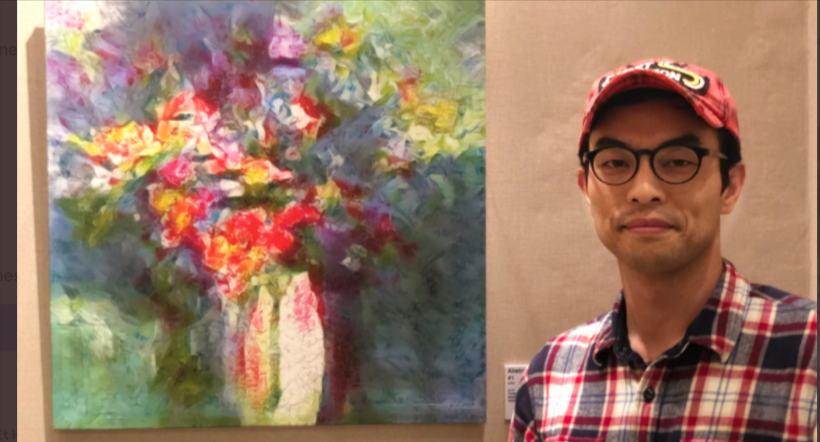
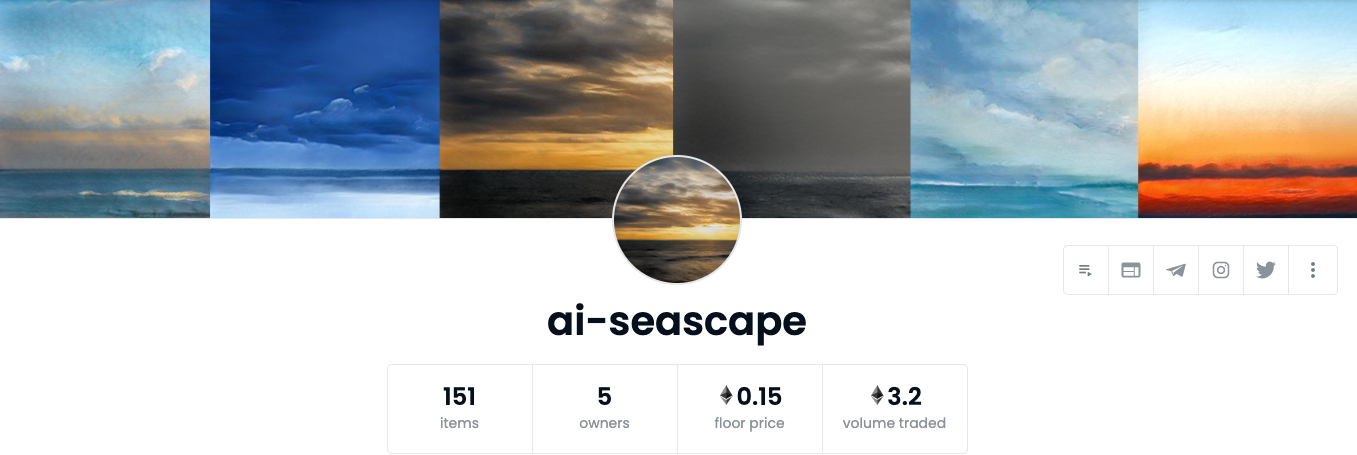
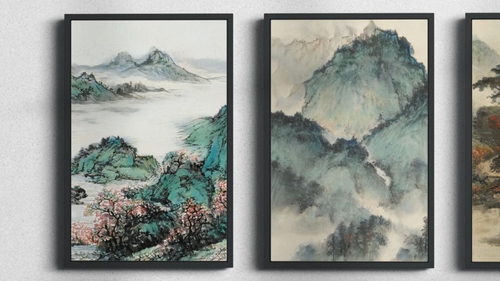

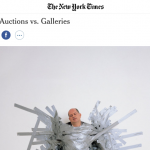
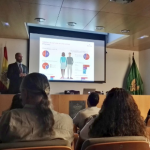
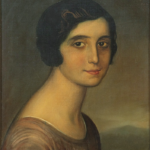
NFTs: qué son, dónde comprar y principales artistas del criptoarte - The Art Market, Hub del mundo del arte
Posted at 11:26h, 27 octubre[…] Soy Chae-Seok Lim, un artista digital que usa IA, que trabaja bajo el nombre de CSLIM. Era ingeniero en el campo de la conducción autónoma basada en la IA, así como desarrollador Dapp de blockchain. Tenía un gran deseo de crear, pero no se me daba bien dibujar, así que me interesaba mucho el arte generativo mediante código. Creo que la tecnología de IA será una herramienta que tendrá un gran impacto en la industria del arte y las tendencias, como lo hicieron los ordenadores y las cámaras. La tecnología actual de IA es todavía difícil de entender y tiene muchas áreas que perfeccionar, también se considera una tecnología inmadura, creo. Pero, en otras palabras, esto también significa que la IA tiene mucho potencial. (Ver Artist Profile) […]